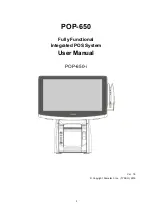
BGS2T AT Command Set
3.3 AT^SIND
BGS2T_ATC_V01.301
Page 70 of 554
1/31/12
c
Unsolicited Result Codes
URC 1
Format of the standard indicator:
+CIEV:
]
Indicator related event has occured, e.g. value has changed.
URC 2
Format of the "simdata" indicator follows
+CIEV:
,
This URC is issued if ME is in
Autoresponse mode (
) and the SIM sent a
REFRESH command (i.e.
=1) indicating that the content of one or more Elementary Files has
been changed.
The ME holds a limited storage available to keep numerous "simdata" events received while
setting
was not enabled or ME-TE link was reserved, e.g. in online data mode. In case of storage overflow a special
URC "+CIEV: simdata,1,254" is issued.
URC 3
Format of the Voice Message indicator, if the number of waiting messages is delivered by the network:
+CIEV:
If the number of waiting messages is not delivered the standard indicator applies.
URC 4
Format of the "eons" indicator:
+CIEV:
One URC is issued for each new LAI (Location Area Information) broadcast by the network.
URC 5
Format of the "nitz" indicator:
+CIEV:
Parameter Description
String values and their
ranges.
are accessible with this command, too. A detailed description of these indi-
cators can be found there.
The following indicators are accessible via
only:
“audio“
Activity of the built-in audio unit.
“simdata“
SIM notifies of changed Elementary File data.
All data provided by the SIM is stored in one of many of its so-called Elemen-
tary Files. This data can be queried by the TE directly via
and
, or implicitly via many AT commands presented by this document.
For instance the SIM's identification number (IMSI) can be queried via
, but actually is stored in EF
IMSI
, as defined in 3GPP TS 11.11
.
PIN ASC0 MUX1 MUX2 MUX3
Last
-
+
+
+
+
-
-
<indDescr>
(str)
0
Audio unit not active.
1
Audio unit is active, for example:
MO voice call: Indicator is output with value 1 when dialing starts.
MT voice call: Indicator is output with value 1 when call is ringing.
Confidential / Released
















































